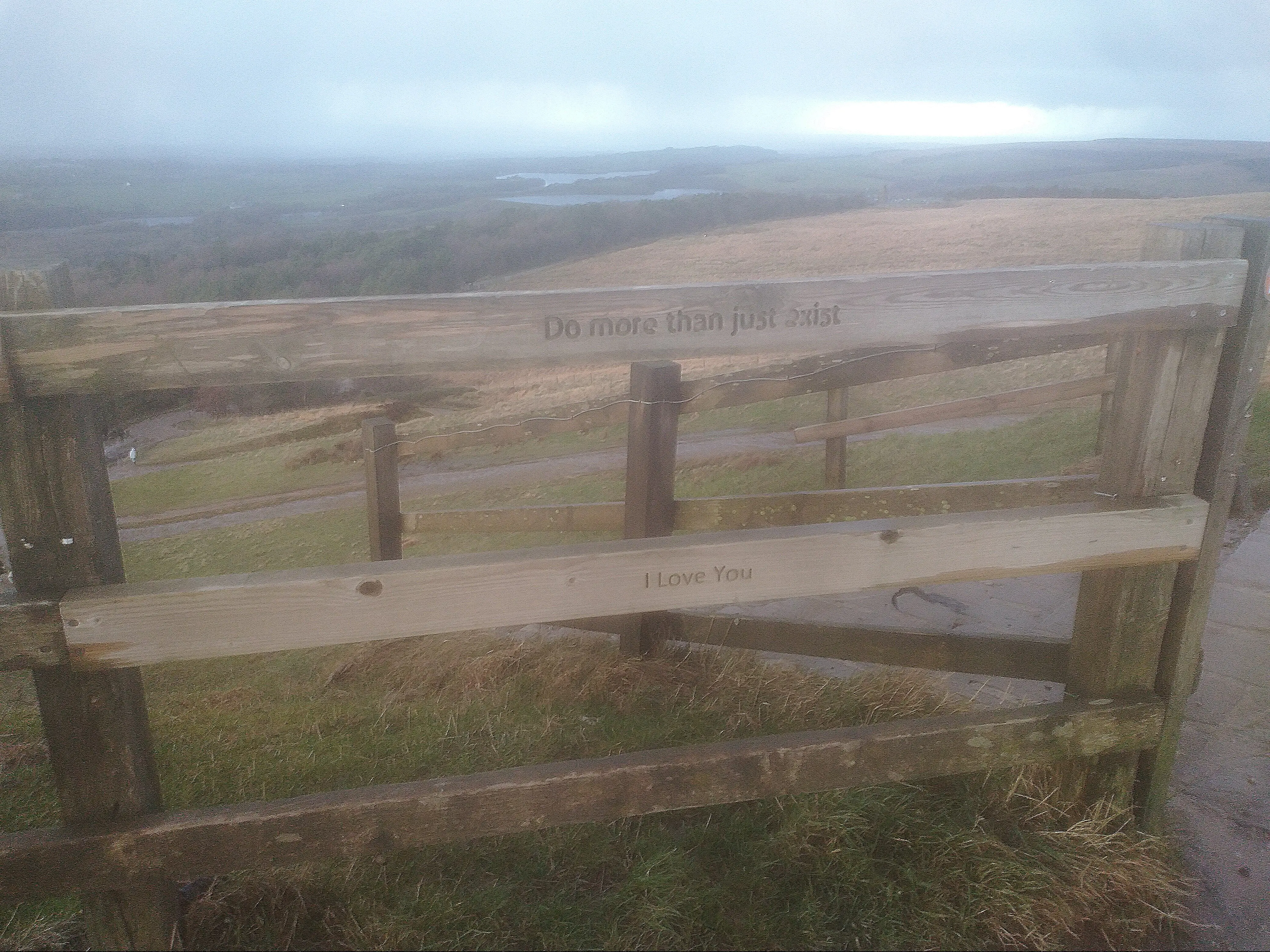There are many local traditions around the holidays that you will only know if you are local. One such tradition for locals living near Bolton, England is to walk up Rivington Pike on Boxing Day. It’s the busiest time of year for this country walk, and as I was staying with my parents in Aspull, it was my time to experience the wet weather and freezing cold temperatures as we ascended the Pike.
My mother drove us to the edge of Horwich, as near to the Pike as we could get. A rainbow greeted us as we set off on our walk.
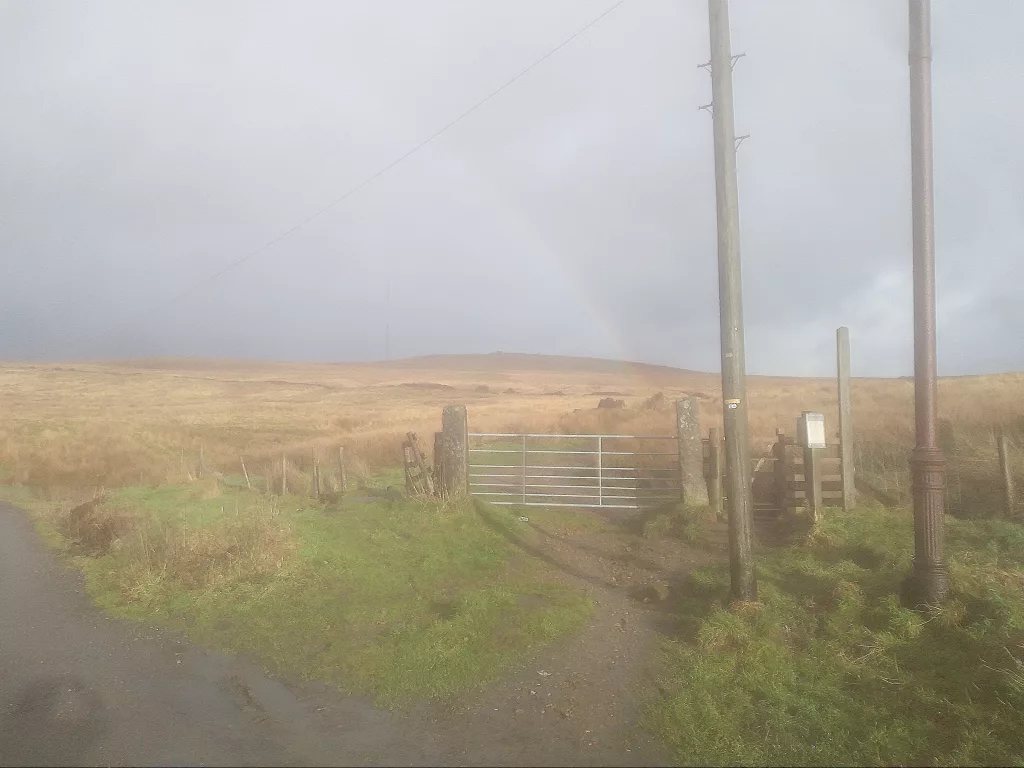
The route up to the peak goes along a bridleway. There is drainage to help with rainfall, however it isn’t well maintained closer to the Pike and we had to navigate several large pools of rainwater along the way.
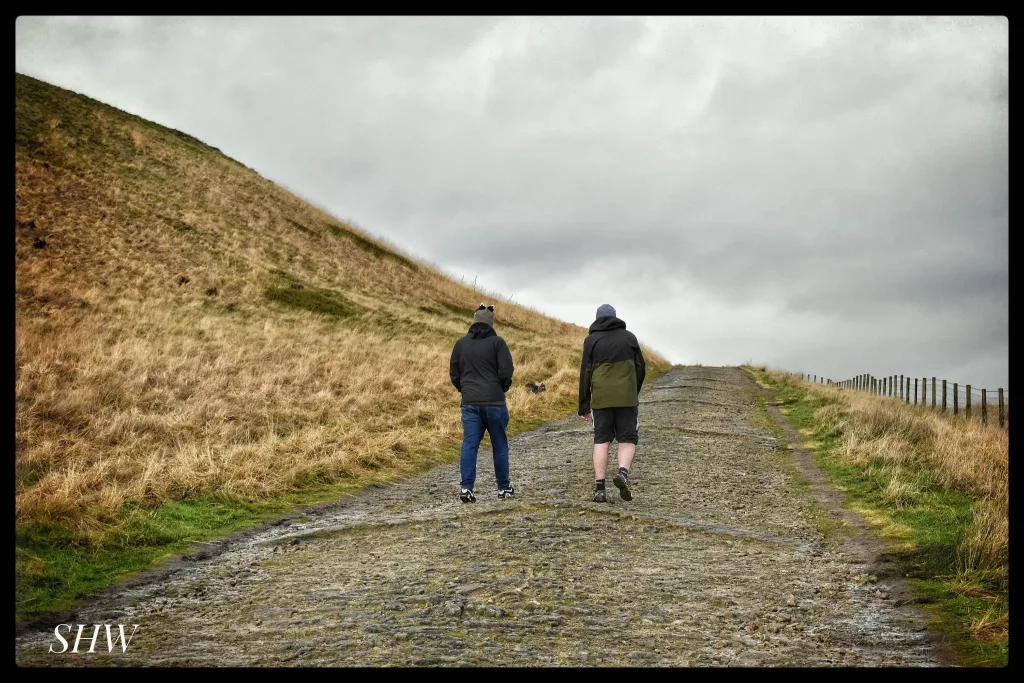
After losing the dog for a short while, we reach the top to find Rivington Pike Tower. With nothing shielding us from the wind anymore, it was freezing cold.
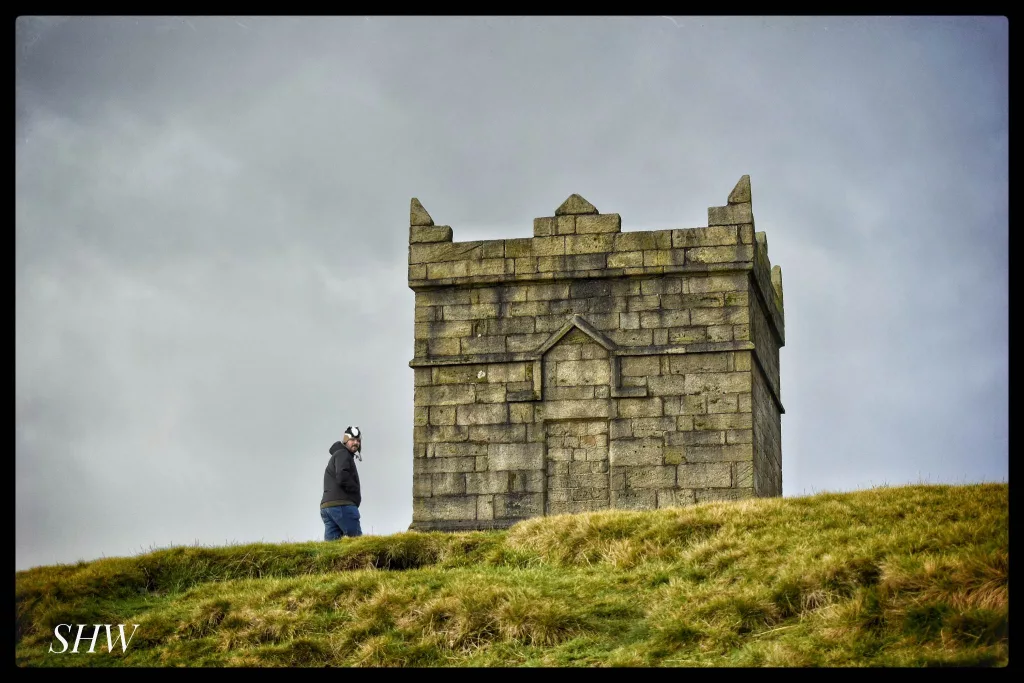
Built in 1733, it marks one of the many beacons that exist across the country. This beacon system was used in Elizabethan England to warn of an approaching Spanish Armada in 1588. It may have looked something like this:
This Pike was also the meeting place of the United Englishmen, an organisation that called for universal suffrage in 1801. They sought assistance from the French, but were instead arrested and became known as the Rivington Hill Rioters.
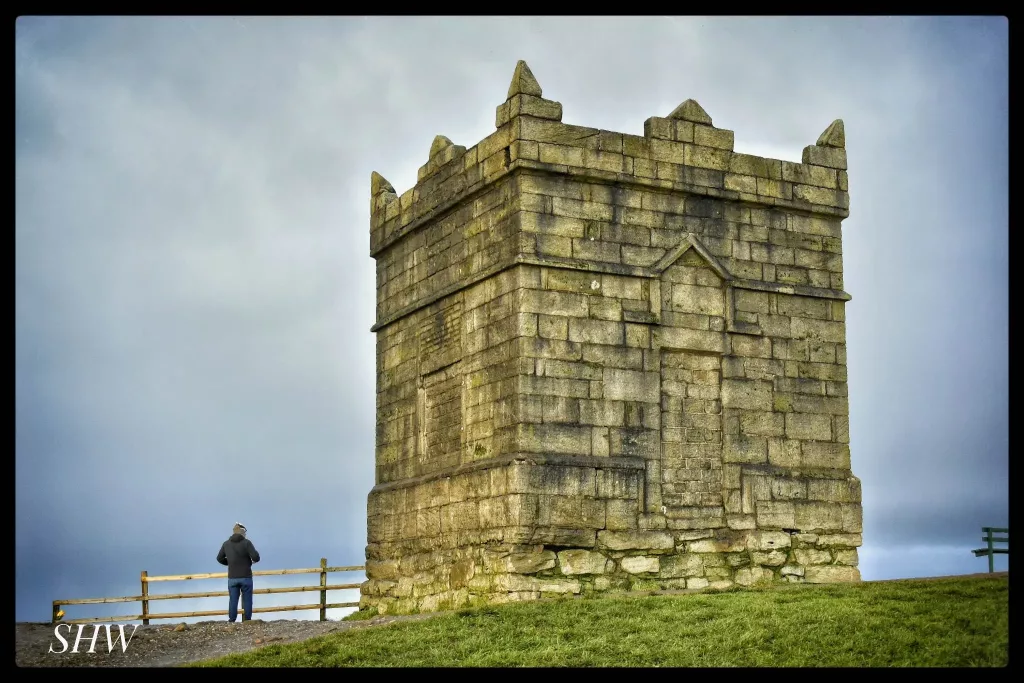
It was also the site of the country’s largest mass trespass, an important movement defending the right to roam that many Brits still enjoy to this day.
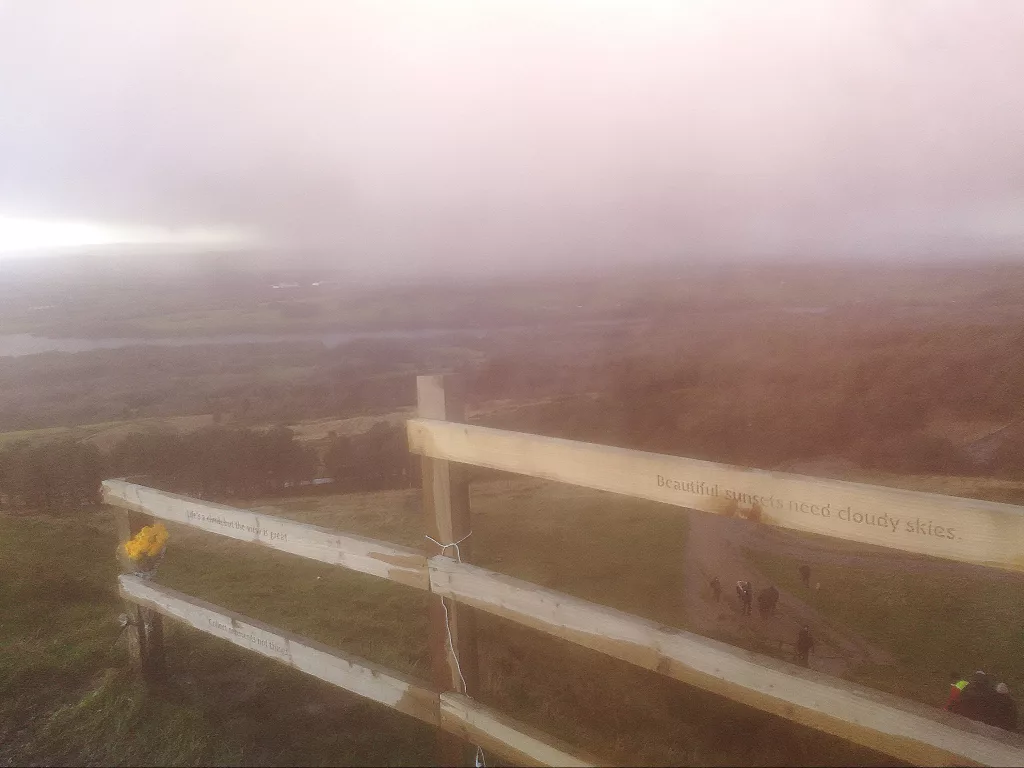
There were flowers laid in a few places around the Pike. Usually these are memorials, either people who were lost to the Pike, or enjoyed this walk while they were alive.
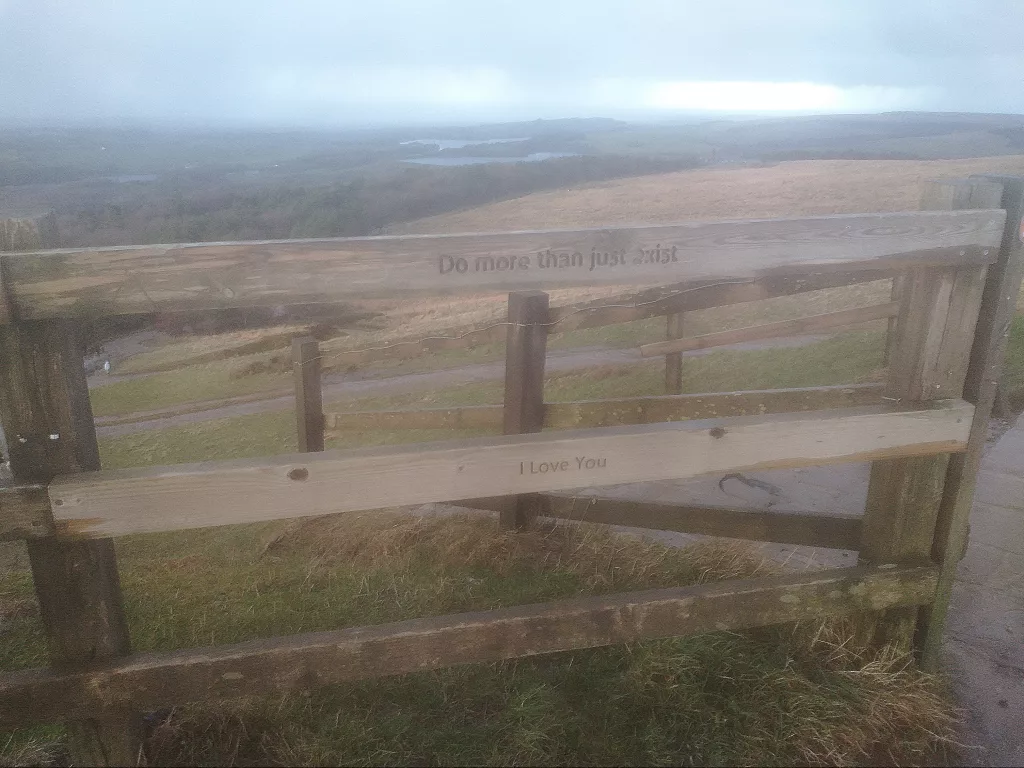
The fences were covered in wholesome quotes. One said “Beautiful sunsets need cloudy skies”, which seemed appropriate for the view that day.
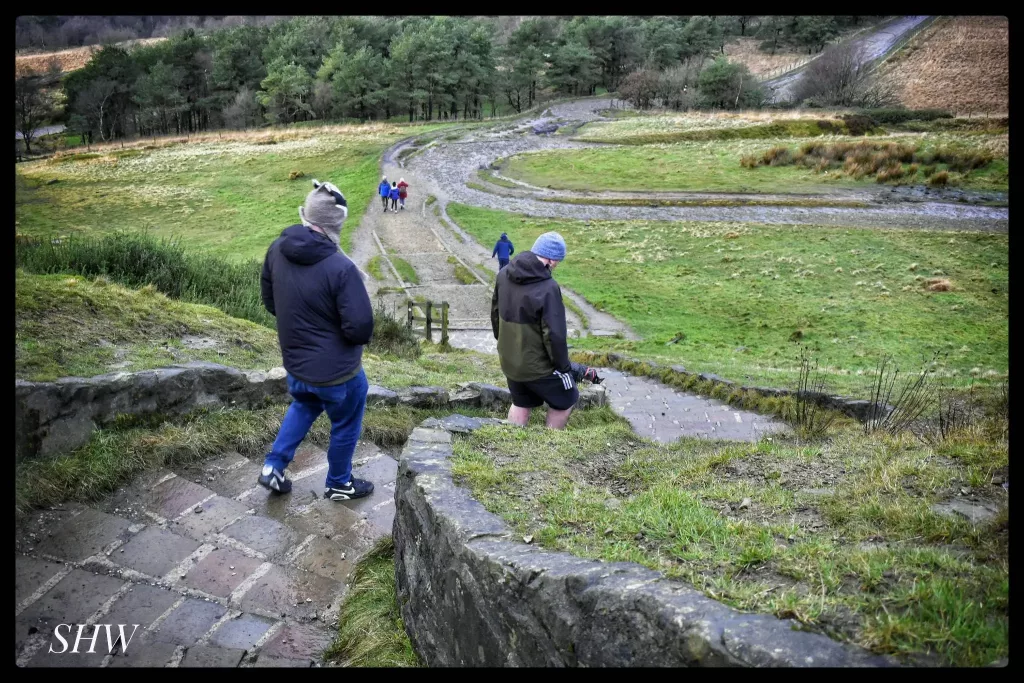
As we made our way down the other side of the hill, the weather took a turn for the worse. Hailstones started to pelt us, stinging our faces. We rushed down to the trees to try and get some cover, then lost the dog again. After realising he was running ahead of us, we followed him to the nearby coffee shop to get shelter and a much needed drink.
Our plan was to continue to the nearby Pigeon Tower, but given the weather we were considering heading straight back to the car. After spending some time with our drinks, however, the weather had cleared up. We headed further down the hill to explore the Terraced Gardens.
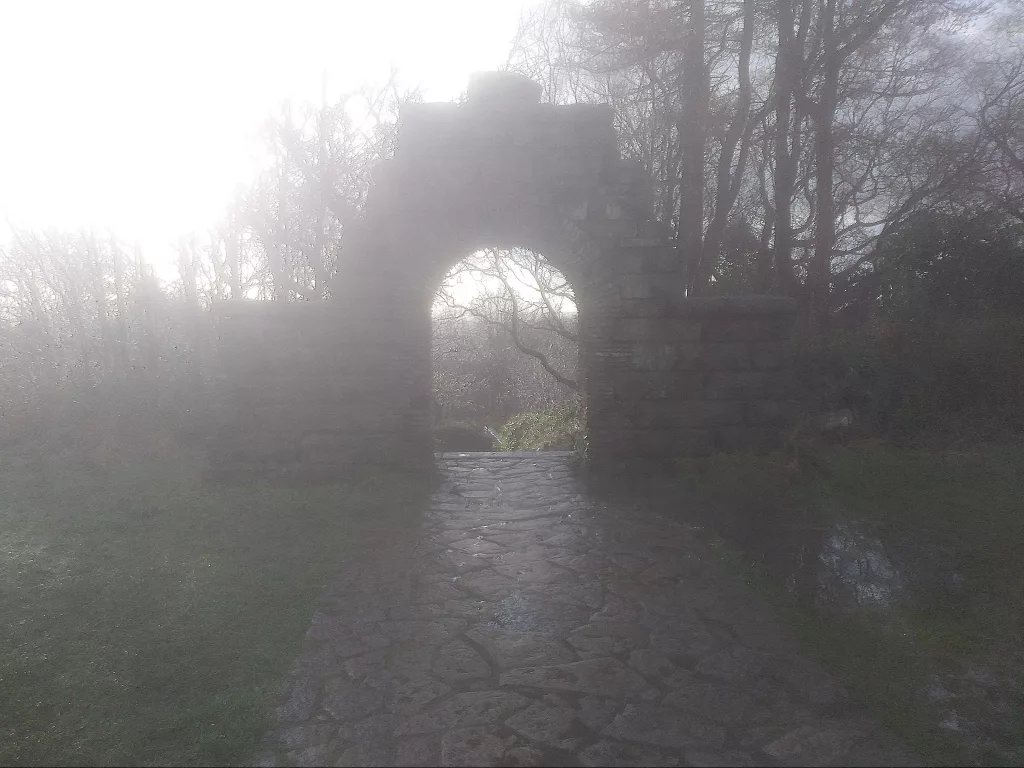
Originally built by William Hesketh Lever, these Victorian gardens have been consumed by the forest. Ruins of the structures still remain, however, and are preserved by the Rivington Heritage Trust.
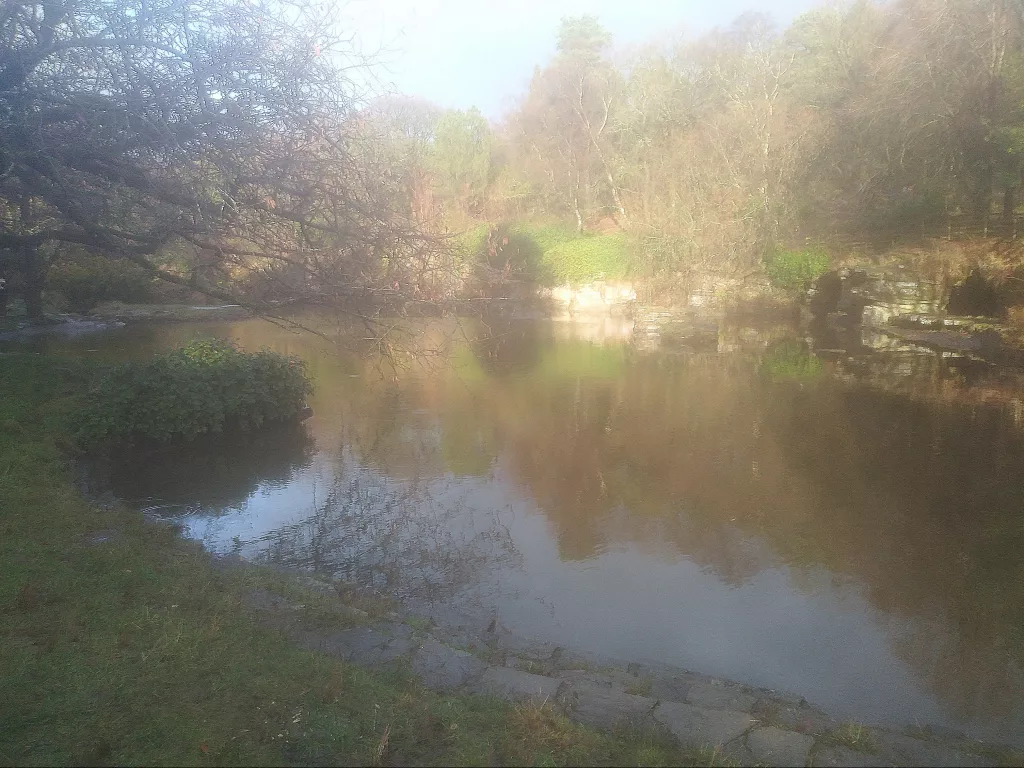
We found our way to the Japanese Gardens. It was originally surrounded by tea houses inspired by a trip to Japan, but these are long gone now. The pond remains, and I wondered if it used to be a koi pond. Either way, there aren’t any koi in the pond today.
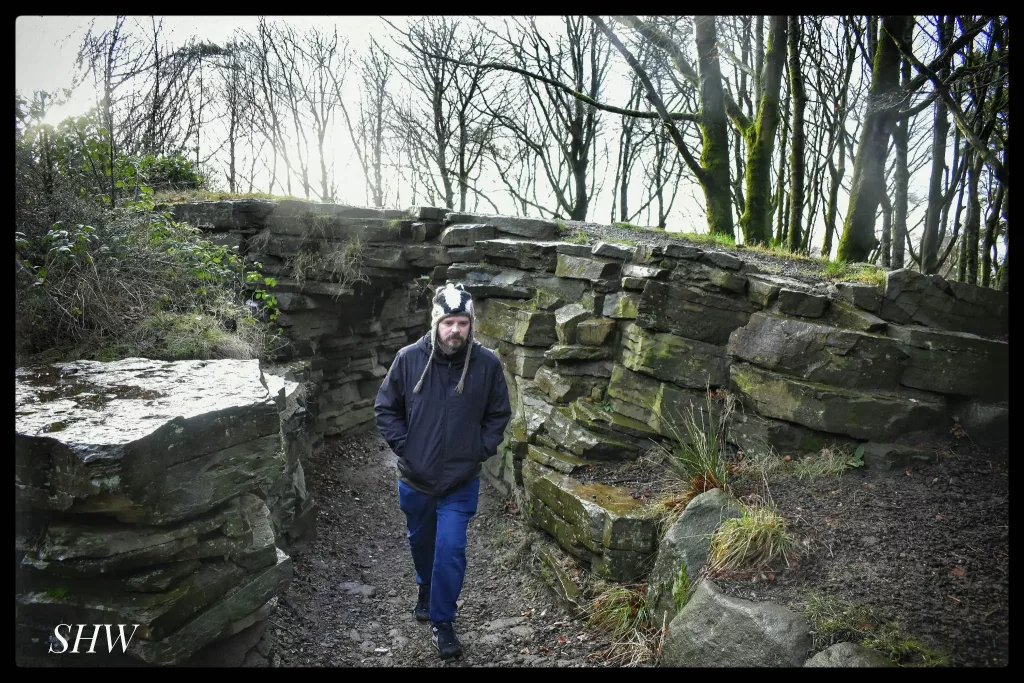
We then got a bit lost, but this led us to the Lever Bridge (also known as the Seven Arches Bridge). The design of this bridge was based on one that Lever had seen in Nigeria.
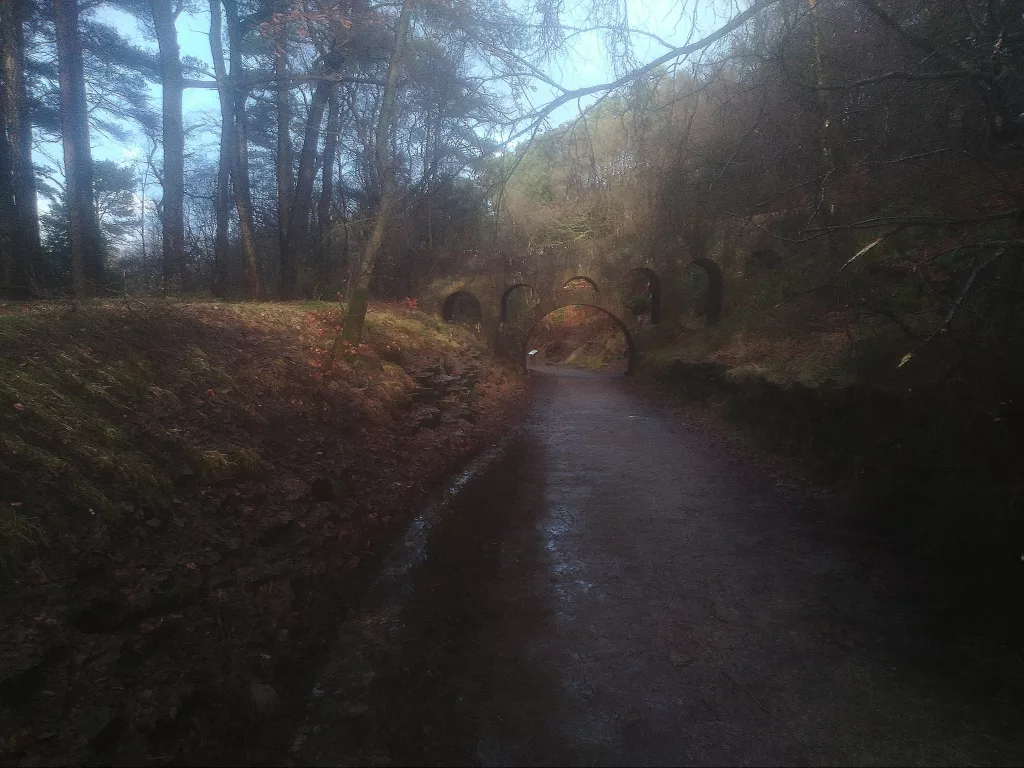
Climbing up to the bridge, we started to once again ascend the hill.
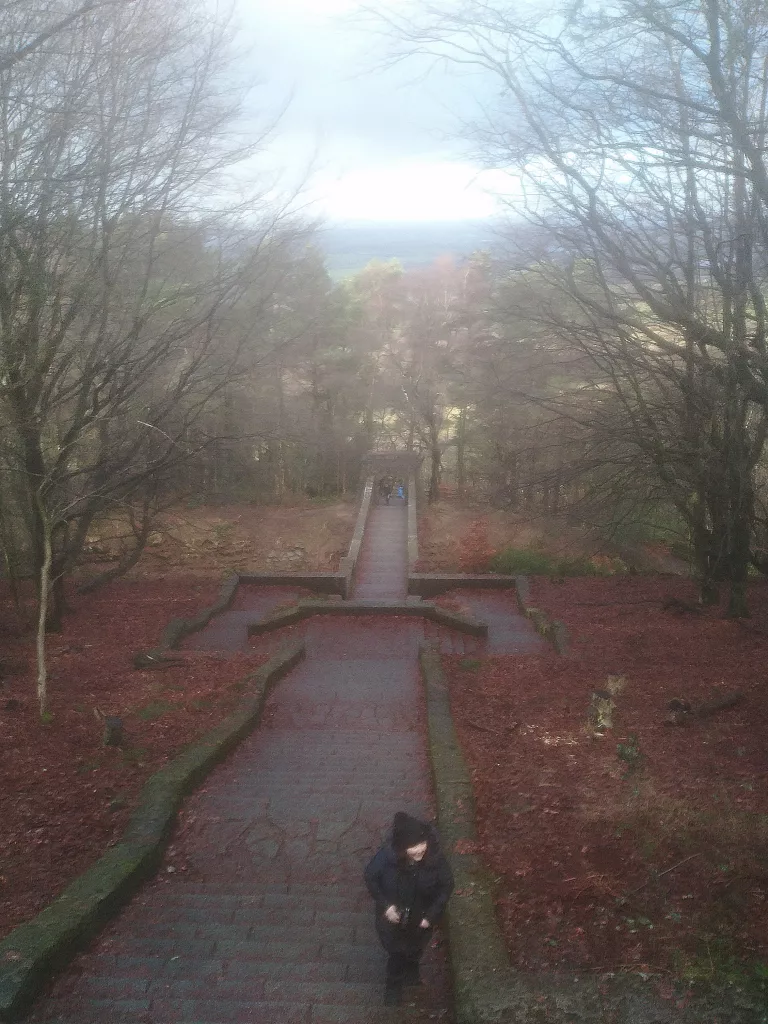
Near the Italian Gardens we found steps up to the Pigeon tower and a viewing platform. On a good day you can see Blackpool Tower, and even the Cumbrian Mountains from here. Unfortunately with the gloomy weather we didn’t have a good view. I could still make out the Irish Sea in the distance, however.
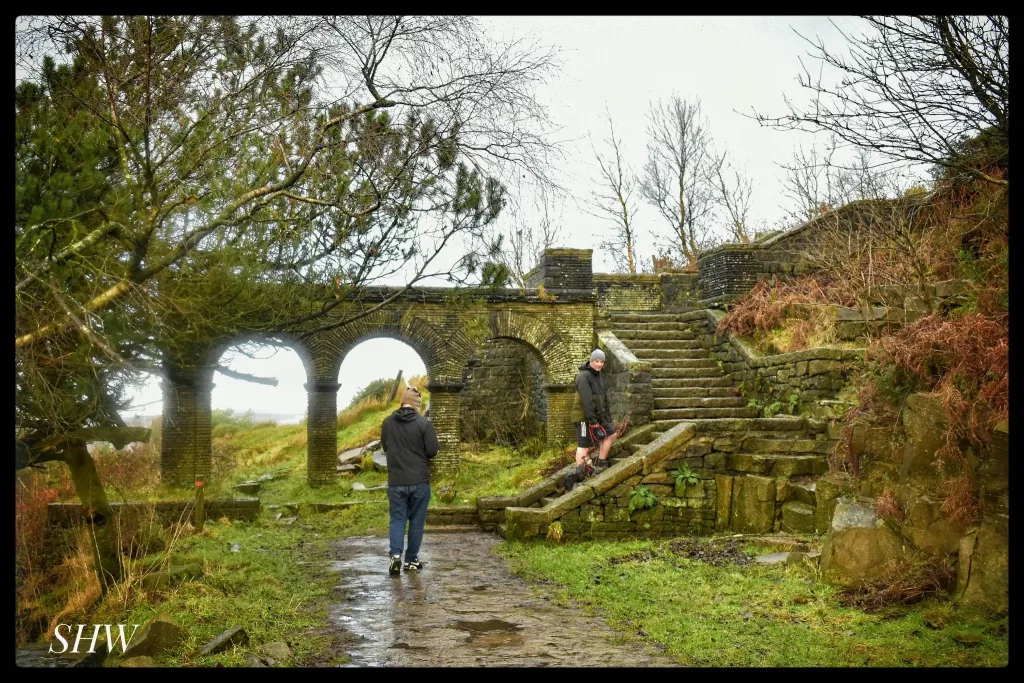
The last stop on our walk was the Pigeon Tower. There are dovecotes and a sewing rooms inside that you can visit, but unfortunately it wasn’t open on Boxing Day.
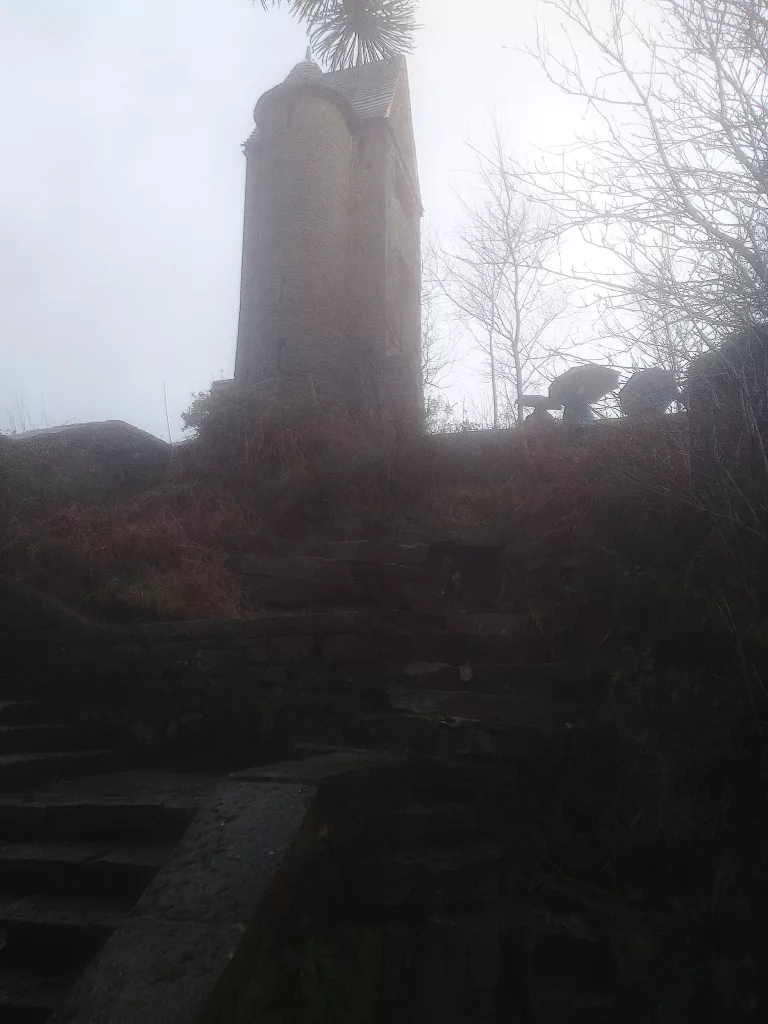
After all that there was only one place left to go: back home. We had walked over 4 miles in total so it was time for a cup of tea.
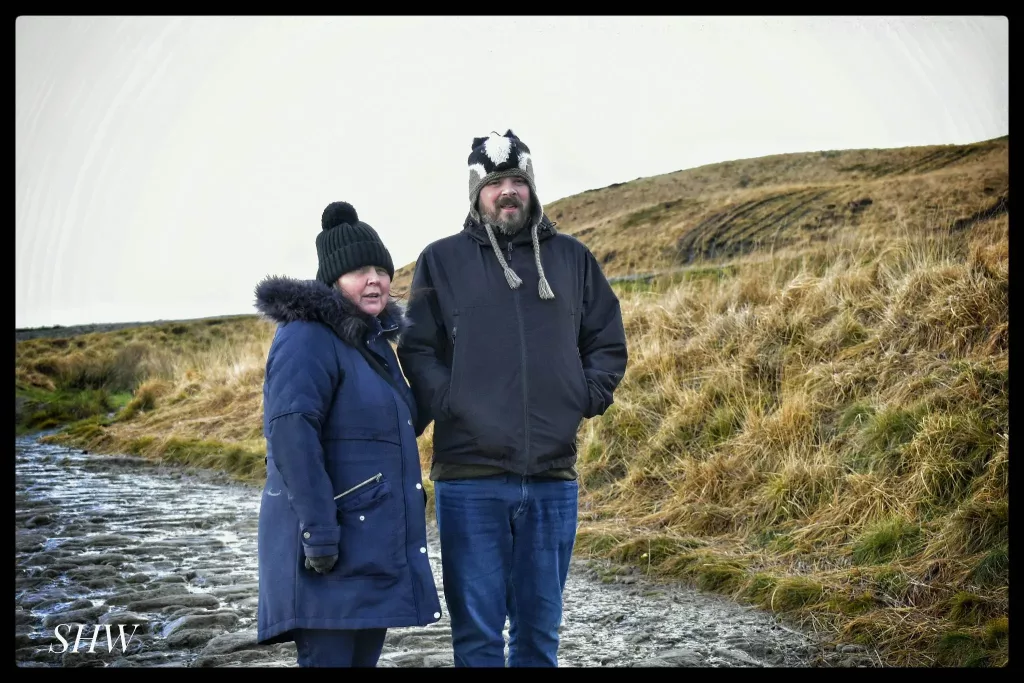
The watermarked images in this post are © 2022 Snap Happy Wanderers. All rights reserved.

